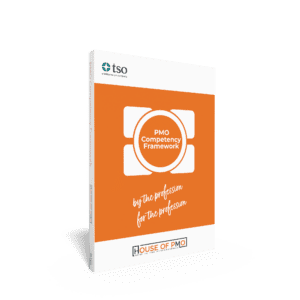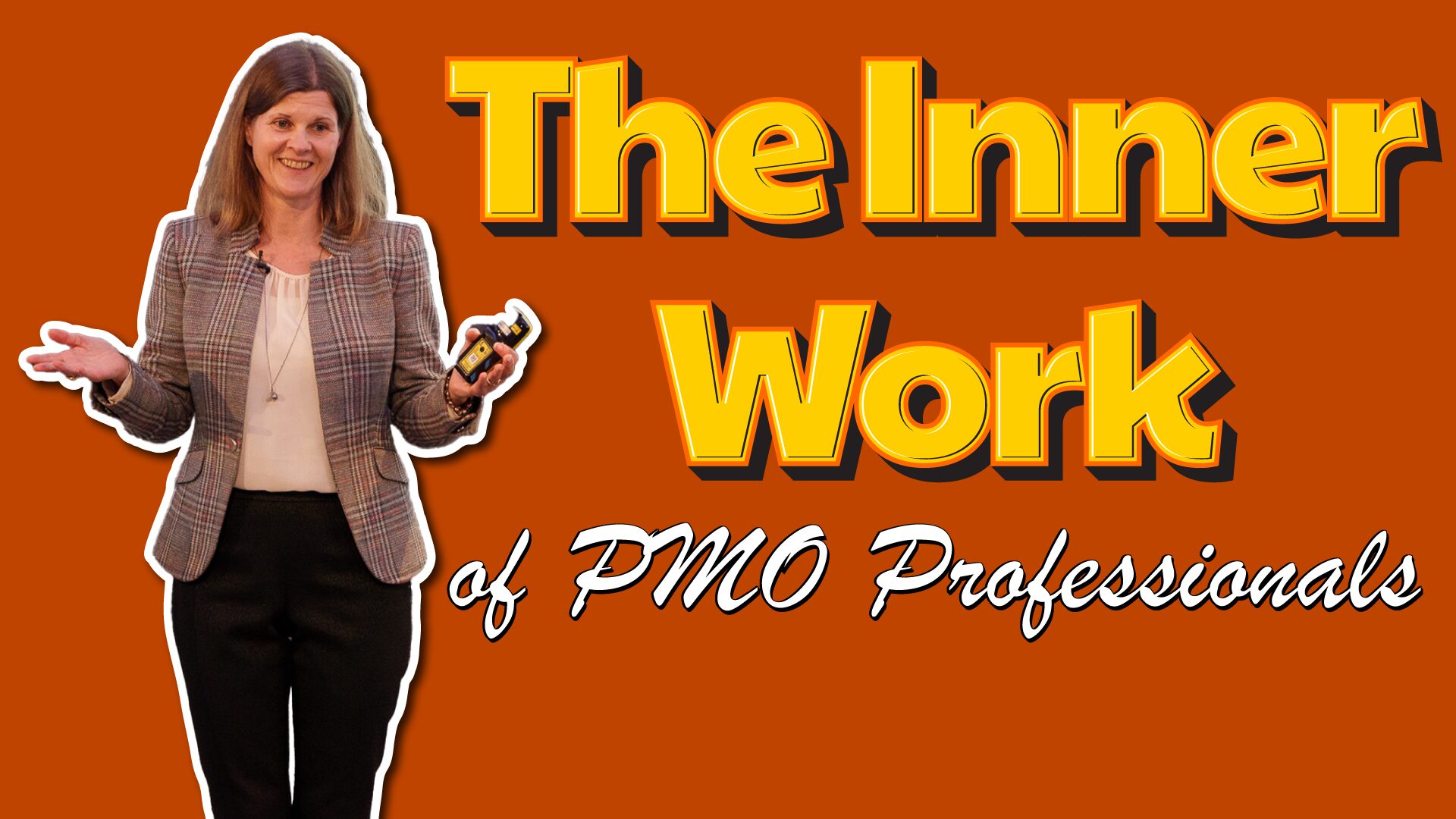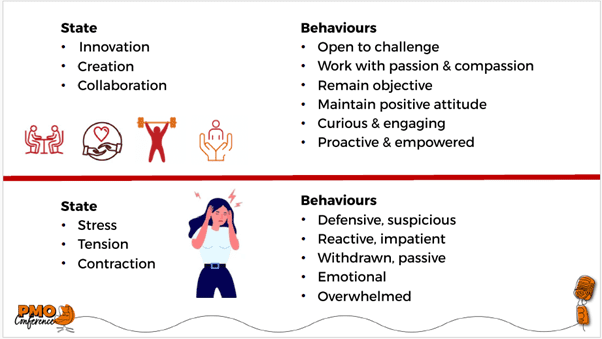Watch back all our PMO Conference sessions
The Inner Work of PMO Professionals
Whereas competence, knowledge, and skills are usually the focus of professional development in PMO, they are often overlooked behavioural components that can make the most significant difference to a PMO professional’s daily work.
 Using the behaviours outlined in the PMO Competency Framework as a starting point, this experiential session explored how we can work with our inner world of thoughts, beliefs, and emotions to enhance our effectiveness and resilience.
Using the behaviours outlined in the PMO Competency Framework as a starting point, this experiential session explored how we can work with our inner world of thoughts, beliefs, and emotions to enhance our effectiveness and resilience.
Through interactive activities and real-world scenarios, we will examine the most emotionally challenging situations faced by PMO professionals and discuss how to best navigate them.
The tools provided can help us “be open to challenge”, “act assertively” and “be resilient” – behaviours from the PMO Competency Framework that can sometimes be hard to embody in light of organisational complexities and challenging interpersonal dynamics.
Recorded Session
Presentation Deck
Download the DeckInsights from the Session
Conference Reporter, Graham Gunn gives his insights:
This presentation referred to the emotional and interpersonal management skills that can be applied to the work (and home) environment(s). The proposal is that being aware of, and subsequently developing these skills, helps us operate at our optimum potential as individuals and as a team.
 It does seem to be a tricky subject in that there are no hard and fast rules or rigid procedures to follow, yet it deals with many variable parameters which affect individuals differently. However, Susanne presented an informative and concise overview of the subject, stimulating a desire to look deeper into its possibilities.
It does seem to be a tricky subject in that there are no hard and fast rules or rigid procedures to follow, yet it deals with many variable parameters which affect individuals differently. However, Susanne presented an informative and concise overview of the subject, stimulating a desire to look deeper into its possibilities.
Some key points that caught my attention are:
 A reference to “Behaviours” as defined in the PMO Competency Framework
A reference to “Behaviours” as defined in the PMO Competency Framework
Susanne selected six of these that closely relate to the emotional states and attitudes that can affect the quality of our lives and PMO work experience, including:
- Be open to challenge and debate
- Be resilient
- Be honest and build relationships
- Work with passion and compassion
- Remain objective
- Be tenacious and assertive
Of course, these idealised behaviours are easier described than consistently actualised (easier said than done in other words) for most of us, especially in the heat of a frantic change program, re-organisation, or in the lead-up to an important reporting deadline or status review.
The important point is learning to be aware of, or recognise when we are, or are not, exhibiting these behaviours/conditions in any particular situation. How often do we get so caught up in complex or stressful situations and our conditioned default responses to them, that there is no time or energy left to evaluate dispassionately what’s actually happening?
So, perhaps we might find time and space to become aware of whether we are aware of how we are actually feeling/behaving.
Another useful concept Susanne presented is the idea of a line of emotional equilibrium, above which we exhibit positive attitudes and below which we exhibit negative attitudes. I suppose an equivalent idea in control systems engineering, such as temperature control in a building, would be the set-point or target temperature. The control system’s job is to monitor the actual situation and send instructions to heating or cooling equipment to maintain the temperature as close as possible to the target level.
Similarly, the individual might monitor how they are feeling in relation to a preferred state, and then consciously adjust their judgements, attitudes and behaviours to re-establish a more productive condition. And, just as in a temperature control system, the further we drift from the target condition, the more effort we have to apply to bring us back to the set-point. It was also pointed out that, counterintuitively, being way above the “line” can be as unproductive as being way below it – you may overlook potential risks or hold on to unrealistic expectations.
Another point Susanne mentioned, that upon reflection, is very significant in relation to communication between individuals. When we are above the line, our interaction more often results in constructive responses, whereas if we try to communicate when we are below the line, the response is more likely to be negative or unconstructive. Looking back over past successful and unsuccessful interactions in my life, this idea seems “spot-on”.
So, the question now is, ” How do we maintain our mental and emotional state close to equilibrium?” The presentation mentioned some ideas.
- Recognise the truth of the situation you are in rather than suppress it – otherwise it’s hard to figure out an appropriate response.
- Be aware of and clarify your thoughts and feelings, otherwise you can’t select the best tool to compensate for them if necessary. [Note: This may take some practice. I read recently that we are far more adept at recognising our physical condition rather than analysing or evaluating our mental state]
- Use breath control to effectively “reverse-engineer” a negative emotional reaction to a stressful situation.
- The practice of meditation was mentioned briefly. My understanding is that this is a process that results in a calm, steady mind that knows instinctively the best response to any situation. This is considered to be the “normal” state, whereas the busy mind, jumping from one worry to the next all day long, is just the “habitual” state. An analogy might be a mind that responds like honey to a disturbance rather than like water – i.e. it dampens down quickly to a steady state, rather than staying turbulent for ages.
 More details can be found in Susanne’s book “How to Do the Inner Work“.
More details can be found in Susanne’s book “How to Do the Inner Work“.
We’ve been enjoying listening to the Spotify version which is great whilst you’re taking time out to have a walk or just chilling out.
We’ve also been actively doing the final few minutes of this presentation regularly – it really does make a difference and its easy to get started!





